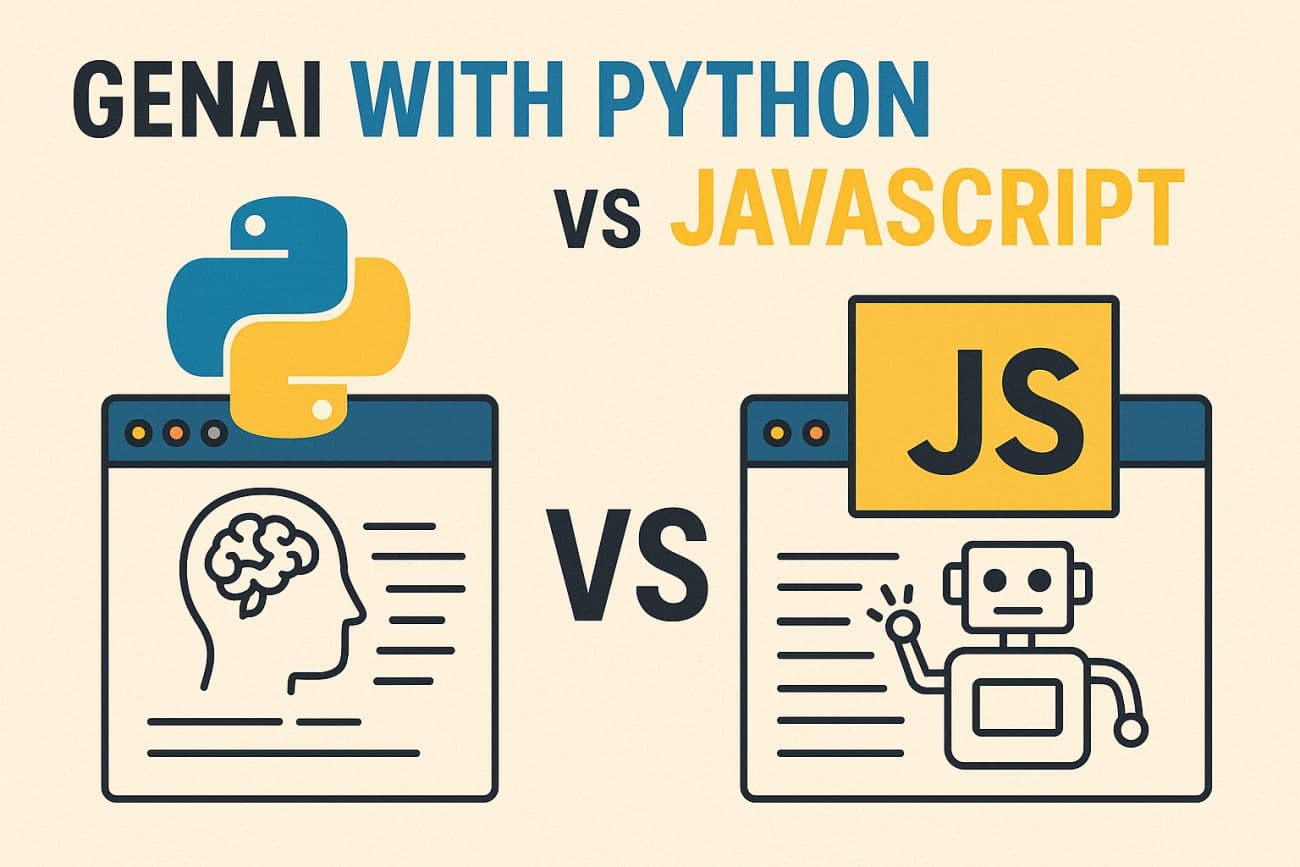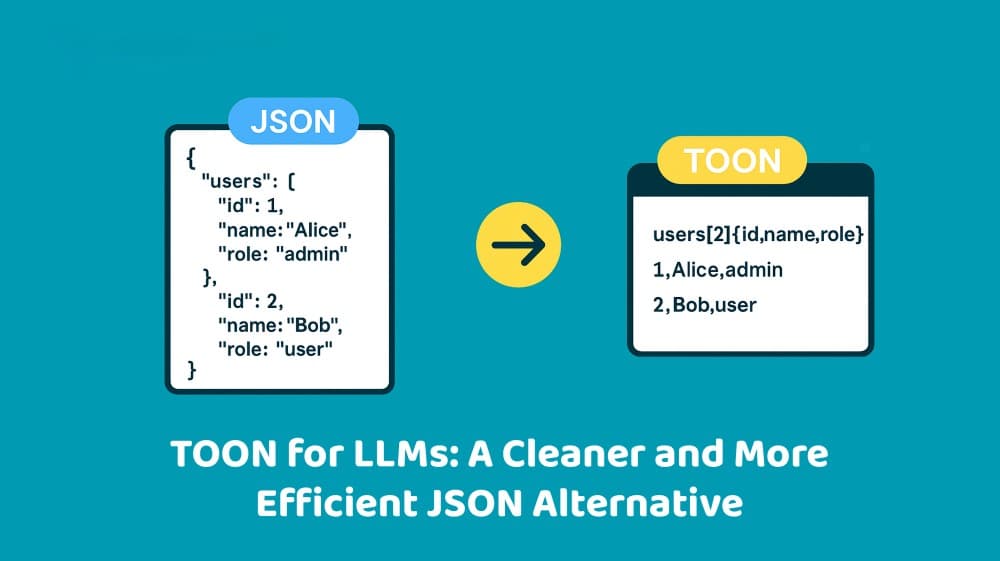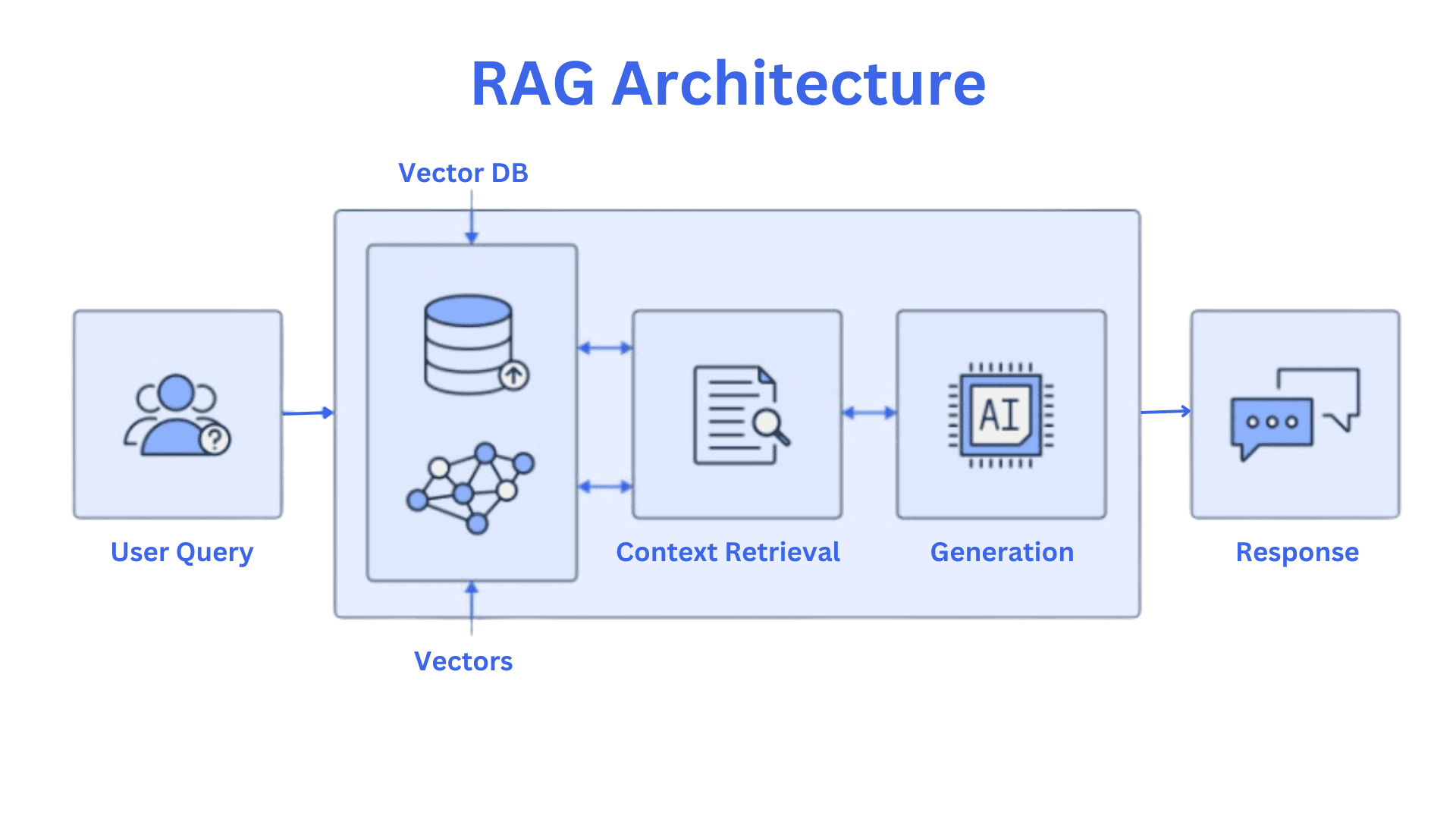GenAI with Python vs JavaScript

GenAI with Python vs JavaScript
Generative AI (GenAI) is transforming industries by enabling applications that can generate text, images, audio, and even code. If you’re considering building GenAI-powered applications, two of the most common languages you’ll run into are Python and JavaScript. Both play critical roles in the AI ecosystem, but they serve different purposes. Let’s compare how GenAI development looks in each.
JavaScript for GenAI
JavaScript (and its superset TypeScript) is increasingly important in GenAI because it dominates the frontend and has growing support in backend runtimes like Node.js.
Strengths
Web-first: JavaScript makes it possible to run GenAI models directly in the browser using libraries like TensorFlow.js or Transformers.js.
Integration: Easy to connect GenAI models with web apps, chatbots, and UI components.
Serverless/Edge Deployment: Frameworks like Vercel AI SDK allow deploying GenAI apps with low latency globally.
Typical Use Cases
- Creating AI-powered chatbots inside web or mobile apps.
- Running lightweight models directly in the browser (no backend required).
- Integrating with APIs (like OpenAI, Anthropic, or Hugging Face Inference API) for real-time GenAI.
import OpenAI from "openai";
// Create a client (make sure OPENAI_API_KEY is in your env)
const client = new OpenAI({ apiKey: process.env.OPENAI_API_KEY });
async function run() {
const response = await client.chat.completions.create({
model: "gpt-4o-mini",
messages: [{ role: "user", content: "Write a haiku about Python vs JavaScript" }],
});
console.log(response.choices[0].message. Content);
}
run();
Python for GenAI
Python has long been the dominant language for AI and machine learning. Its ecosystem is rich with libraries, frameworks, and tools that make building GenAI models more accessible.
Strengths
Rich AI/ML Ecosystem: Libraries like TensorFlow, PyTorch, Hugging Face Transformers, and LangChain provide ready-to-use tools for training and deploying GenAI models.
Community and Research: Most AI research papers and cutting-edge models are released in Python first.
Ease of Prototyping: Python’s simple syntax makes it ideal for quickly experimenting with models.
Typical Use Cases
- Training and fine-tuning large language models (LLMs).
- Building custom pipelines for text, image, and audio generation.
- Running experiments in Jupyter notebooks.
from openai import OpenAI
import os
# Create a client (make sure OPENAI_API_KEY is in your env)
client = OpenAI(api_key=os.environ.get("OPENAI_API_KEY"))
response = client.chat.completions.create(
model="gpt-4o-mini",
messages=[
{"role": "user", "content": "Write a haiku about Python vs JavaScript"}
]
)
print(response.choices[0].message. Content)
Python vs JavaScript: A Side-by-Side View
| Aspect | Python | JavaScript/TypeScript |
| Ecosystem | Rich ML/AI libraries (PyTorch, HF) | Growing AI tools (Transformers.js, TensorFlow.js) |
| Best For | Training & research | Deployment & integration |
| Performance | Great for heavy computation (GPU) | Limited in-browser, but improving |
| Community | Strong research & academic focus | Strong developer & web focus |
| Deployment | Often needs servers/cloud infra | Easy web/edge deployment |
Conclusion
Use Python if your focus is model development, fine-tuning, or heavy experimentation. It’s the language of AI research and model training.
Use JavaScript if you want to integrate GenAI into user-facing applications, especially in the browser or on the edge.



